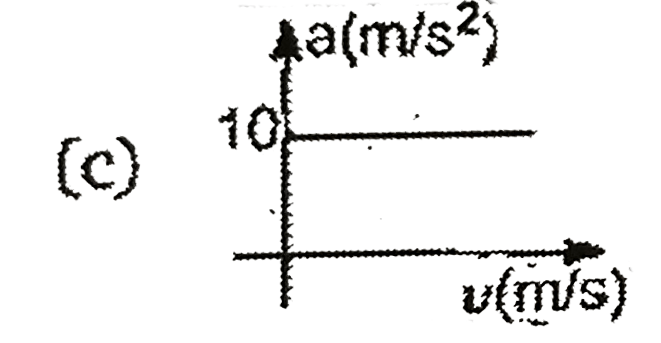Statement-I : Graph (1) represent one dimensional motion of a particle. While graph (2) can not represent 1-D motion of the particle. (here x is position and t is time)

Statement-II : Particle can have only one position at an instant.
If both assertion & Reason are True & the Reason is a corrrect explanation of the Asserion.
If both Assertion & Reason are True but Reason is not correct explanation of the Assertion.
If Assertion is Trie but the Reason is False.
If both Assertion & Reason are false
The correct Answer is:A
Step by step video, text & image solution for Statement-I : Graph (1) represent one dimensional motion of a particle. While graph (2) can not represent 1-D motion of the particle. (here x is position and t is time) Statement-II : Particle can have only one position at an instant. by Physics experts to help you in doubts & scoring excellent marks in Class 12 exams.
Updated on:21/07/2023Topper's Solved these Questions
- MOTION IN A PALNEBook:ALLENChapter:MOTION IN A PALNEExercise:SOLVED EXAMPLE
Explore 28 Videos
- MOTION IN A PALNEBook:ALLENChapter:MOTION IN A PALNEExercise:EXERCISE-2
Explore 170 Videos
- KINEMATICS-2DBook:ALLENChapter:KINEMATICS-2DExercise:Exercise (O-2)
Explore 48 Videos
- NEWTON'S LAWS OF MOTION & FRICTIONBook:ALLENChapter:NEWTON'S LAWS OF MOTION & FRICTIONExercise:EXERCISE (JA)
Explore 4 Videos
Similar Questions
Knowledge Check
Which of the following graphs cannot represent one dimensional motion of a particle?
A B
B C
C D
D
In the one-dimensional motion of a particle, the relation between position x and time t is given by x2+2x=t (here x>0). Choose the correct statement.
AThe retardation of the particle is 14(x+1)3BThe uniform velocity of the particle is 1(x+1)3CBoth are correctDBoth are wrongWhich of the following graphs cannot possibly represent one dimensional motion of a particle?
 A(i) and (ii)B(ii) and (iii)C(i), (ii) and (iii)DAll four
A(i) and (ii)B(ii) and (iii)C(i), (ii) and (iii)DAll four
Which of the following graphs cannot possibly represent one dimensional motion of a particle.
 .
.
View SolutionState with reasons why the graph in the adjacent figure cannot represent one-dimensional motion of a particle.

View SolutionWhich of the following graphs represents the motion of a particle moving with constant velocity?


View SolutionFigure gives the x-t plot of a particle is one dimensional motion. Give the signs of position, velocity and acceleration of the particle at t = 0.3s

View SolutionFigure shows the position the graph for a particle in one dimensional motion. Which of the graphs in fugure represent the variation in the velocity of the particle with time ?

View Solution


